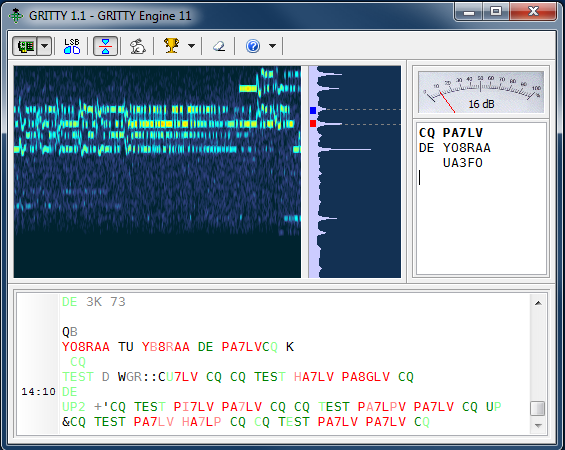


There might be fair amount of "empty" CQing going on tomorrow but it sounded to me like they were all staying very busy today. They would keep a pile up going hour after hour. The idea makes sense to me but with my little station I can never get a pile up big enough to worry about! :-)Īnd something else to think about is that most of the fast CW was being done by stations with big signals. And as the size of the pileup goes down they will slow their speed down a bit. When the pile up is big and hard to pick out a single station they will increase their speed with the idea that those who can't copy the 40ish or even more wpm CW will leave and come by later. One of the things some of the good contesters do is to vary their speed depending on the size of the pileup they have. You may be pleasantly surprised with the results. I believe I achieved some success as I have noticed fewer repeat requests and fewer incorrect copies in my S&P efforts in CQWWCW this weekend. I tried this out, experimenting with various changes, and settled on a setup I thought would improve the readability of my call sign. Instead of allowing the program to pull one's callsign from the station data page, it was suggested to enter a call sign directly in the F-key macros, and use the to speed up or slow down 1 or more characters by 2 (or more) wpm, and/or with the ~ add a half space (or more) between 1 or more characters.
USING FLDIGI WITH N1MM HOW TO
In addition, Something I noticed when I set up my Winkeyer this past summer, were suggestions in the documentation about how to make a call sign more readable. As a "mere mortal" myself, I often have to listen multiple times to copy a call sign sent at 30 wpm & up whereas If I copied in one or two tries, I could have made the qso and moved on to another, which would improve my rate as well as the rates of others. On Sat, at 11:18 AM, Phil wrote: Hi Folks,ħ3 Phil G0BVD frustrated ham of North Devon UK - Dana Phillips N6DW think Ken has a good point. And they need to be well-formed CW, not only at the source, but also after the ionosphere has had its way with them (auroral flutter, anyone?). Signals need to be strong with no QRM, and you need to tune them in fairly accurately. They don't like varying speeds - you might find it works better if you crank up the speed setting (second from the left on the bottom of the fldigi window) to more closely match the speeds other stationsĪre working at. I have been into config- rig control- modems and I wonder what your setting are? I have looked at so many YouTubes and still not found an answerħ3 Phil G0BVD frustrated ham of North Devon UKĬode reader performance is often underwhelming. To say I am disappointed is a understatement, maybe it is operator error but I found the decoding very poor, am I doing something wrong? I could only get the screen to decode if the station was operating around 15/18 wpm anything above that was hopeless andįrustrating spent all day and only worked 6 stations :( I am hearing the stations with strong signals but sadly not seeing the callsigns! just gobbledygook Knowing a lot of stations are using keyboard/screen I set up N1MM with FLDigi CW Reader.
USING FLDIGI WITH N1MM CODE
I have always wanted to participate in the CQWWCW contest, plus it would help me with my Morse code reading after a 32 year lapse! CQWW is a great contest for this because the exchange (zone) is something that 99.99% of the time is determined by the callsign and N1MM pre fills that in for you.įrom: Behalf Of Phil via Groups.Io Sent: Saturday, Novem11:18 AM To: Subject: CQWWCW CW Reader It might require listening to 10 QSOs for you to copy all theĬallsign characters, but it is good practice and you’ll get better. If you want to improve your skills, set a goal of not using the crutch for an entire contest. Telling a D from a B from a 6, or S from H, etc. For example, with the guys who send 35+ WPM, I can have a difficult time I use it as a crutch only – to check if what I copied is what the computer decoded. Or you can turn it loose and have it figure those things out. The nice thing about it is that you can manuallyĬontrol where in the passband you want to decode and set the detection threshold. CWGet works pretty well, or it is at least is as good as it gets. I haven’t used FLDIGI for the job at all. There are many variables – QRN, QRM, s/n ratio, spacing, “fist”, sending speed etc. Even in good conditions, computer decoding of CW is far from perfect.


 0 kommentar(er)
0 kommentar(er)
